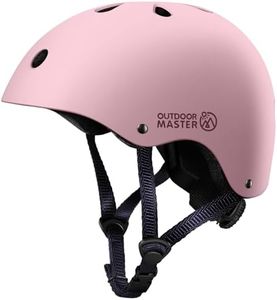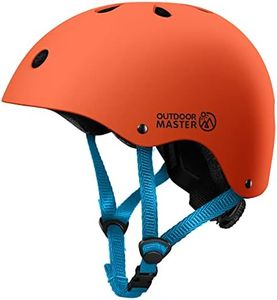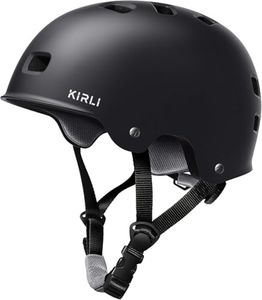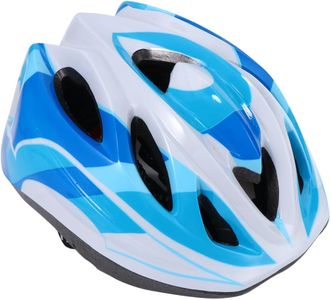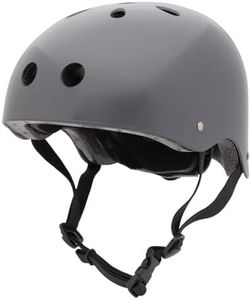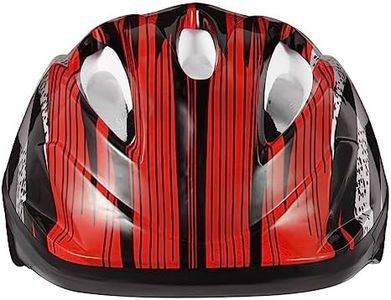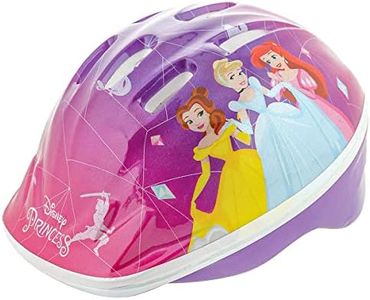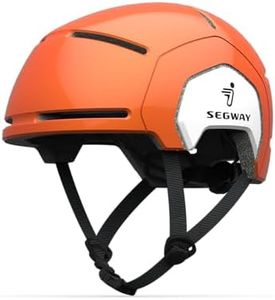We Use CookiesWe use cookies to enhance the security, performance,
functionality and for analytical and promotional activities. By continuing to browse this site you
are agreeing to our privacy policy
10 Best Child Bike Helmets
From leading brands and best sellers available on the web.By clicking on a link to a third party's website, log data is shared with that third party.
Buying Guide for the Best Child Bike Helmets
Choosing a child bike helmet is an important decision to help keep your youngster safe while they're riding. The goal is to find a helmet that offers reliable protection, fits well, is comfortable to wear, and encourages your child to use it every time they ride. When buying a helmet, it's important to focus on a few specific features that impact safety, fit, and ease of use, rather than just picking the first one you see with a fun color or character. Understanding these aspects will help you make a choice that both you and your child will feel good about.Safety CertificationSafety certification refers to the helmet meeting safety standards set by recognized organizations. This is crucial because it ensures the helmet has passed tests for impact resistance and protection. Common certifications include CPSC, ASTM, or European standards. For children's helmets, always check for at least one certification label inside the helmet. Don't choose a helmet that lacks any certification, because these may not offer adequate protection. Simply put, if your child is using the helmet for biking or similar activities, certification is always required—this is not something to compromise on regardless of your use case.
Fit and AdjustabilityFit relates to how snugly the helmet sits on your child's head. A properly fitted helmet does a better job at protecting the head and is more comfortable, increasing the chances your child will actually wear it. Sizing is often based on the circumference of the head—measure your child’s head just above the eyebrows and compare it to the sizing chart. Adjustability refers to features like adjustable straps or dial-fit systems that allow you to fine-tune the fit. Helmets with better adjustability can 'grow' with your child or fit a range of head shapes. For the best fit, the helmet should be level on the head, covering the forehead, and not wobbly. If your child falls between sizes, choose the one that fits snugly and offers adjustment features.
WeightWeight means how heavy the helmet feels. Lighter helmets are generally more comfortable for younger children, especially if they will wear the helmet for longer bike rides. Heavier helmets can cause neck strain or discomfort, leading your child to resist wearing it. Most children’s helmets are designed to be reasonably light, but if possible, compare a few by hand or look at the listed weight. For toddlers or small kids, prioritize the lightest option that still meets safety requirements, while older children can handle a bit more weight, especially if extra protection or features are added.
VentilationVentilation refers to the number and style of holes or channels in the helmet that help air flow over the child’s head. Good ventilation prevents overheating and helps your child stay cool, especially in warm weather or during longer rides. Helmets with more or larger vents offer increased airflow but sometimes less coverage, whereas fewer vents can mean better protection in specific areas but less cooling. If your child tends to feel hot or sweats a lot, look for helmets advertised with excellent ventilation. For casual or short rides, less ventilation may still be acceptable.
Retention SystemThe retention system includes all straps, buckles, and adjustment mechanisms that keep the helmet secure on your child's head. It's important because a helmet that shifts or falls off offers poor protection. Look for easy-to-use, adjustable chin straps and buckle systems, ideally ones that your child can fasten or open themselves but that won’t come undone accidentally. Some helmets have special padding or magnetic buckles for extra comfort and easy use. If your child is especially young or sensitive about comfort, choose a retention system that doesn't pinch and is easy for you (and eventually your child) to operate.
VisibilityVisibility can mean how well the helmet allows others to see your child. Some helmets feature bright colors, reflective patches, or even built-in lights. This is important, especially if your child will ride near roads, in lower light, or in busy areas. More visible helmets make your child easier for others to notice, reducing the risk of accidents. If your riding is in a park or playground, this may not be as critical, but for street riding or dusk rides, prioritize visibility features.
